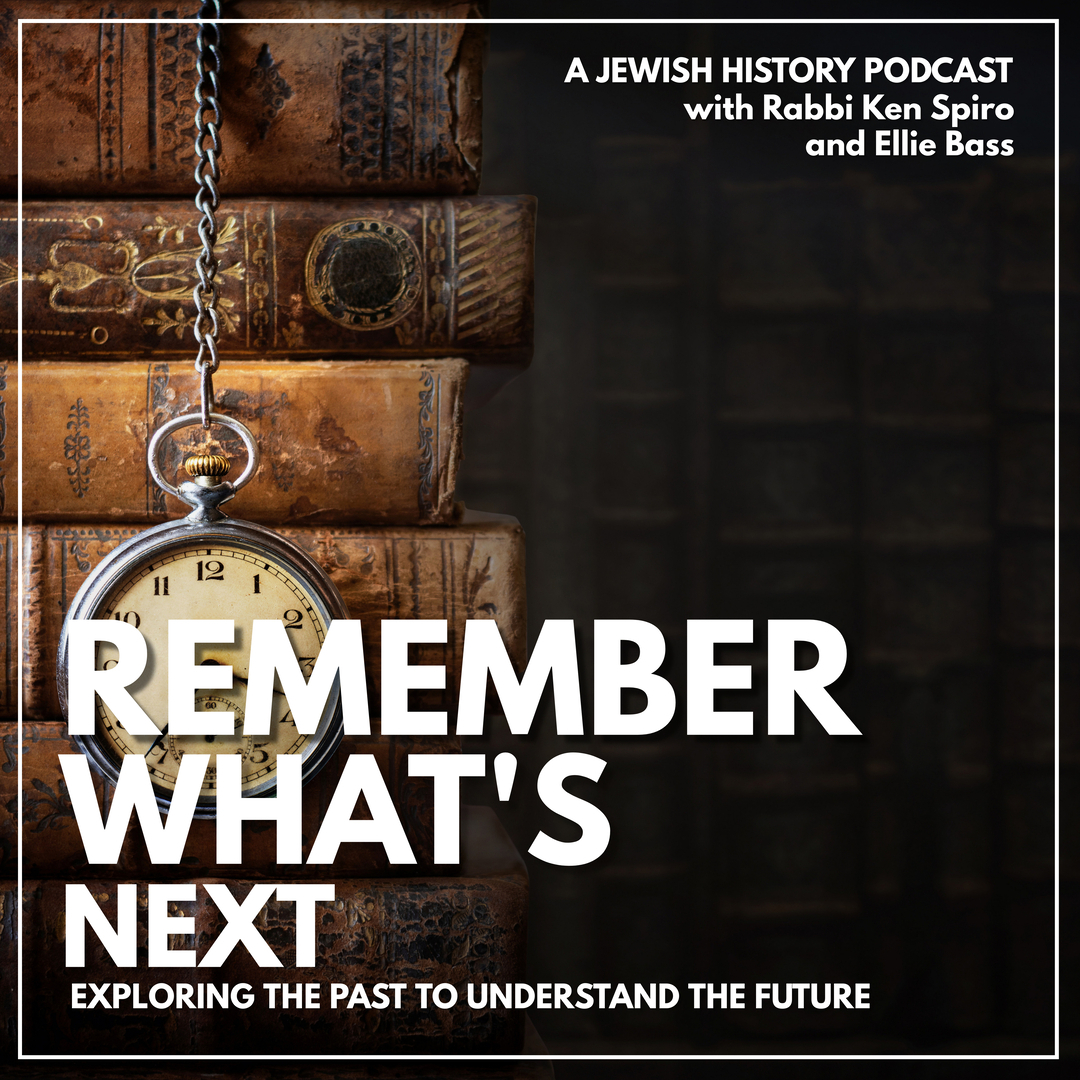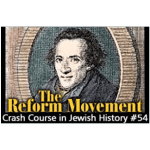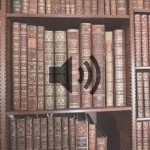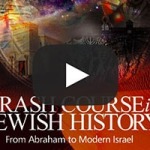History Crash Course #12: The Golden Calf
Only a tiny portion of Jews participate in worshiping the golden calf. So why blame the whole nation?
The day for this infamous event is forever marked in the Hebrew calendar — 17th of Tammuz. This would be the day later in history on which the walls of Jerusalem would be breached by the Babylonians and the Romans prior to the destruction of both the first and the second Temple.
It is very important to analyze what happened with the golden calf and why the Torah criticizes the Jewish people so harshly for this sin. And indeed what is revealed here about how God views the Jewish people.
After the greatest national revelation experience in human history when the whole nation hears God, Moses goes up the mountain and comes down 40 days later to find people dancing around an idol.
Now if I’d had an encounter with the Infinite Creator of the Universe speaking to me and I heard Him say “I am God, don’t worship anything else,” I don’t think I would be stupid enough to be jumping around a golden cow. So what’s going on in this story?
This is a classic case of knowing how to correctly read the text of the Bible. When I say correctly read, I mean, ideally in Hebrew but certainly with the commentators because there’s an oral tradition that must be studied along with the simple, very brief description in the text.
When Moses came down the mountain, were all 3 million Jews dancing around a golden calf? No. The Torah in Exodus 32:28 says it was only about 3 thousand people, mostly the mixed multitude of individuals who left with the Jews because they were so impressed by what went on with the Ten Plagues.[1]1
That means that only about .1% of the Jews (one in a thousand) participated and 99.9% of the Jews did nothing wrong, (although the majority’s failure to stop the minority from worshipping the Golden Calf was considered a mistake). Yet God’s reaction makes it clear he is blaming the whole nation.
LOVE ISN’T BLIND
We already mentioned that amongst all ancient books the Bible is unique in its objective criticism and that the purpose of this criticism is to educate. But why the hyper-criticism?
One of the great untrue expressions of all time is “love is blind.” Infatuation surely is but true love has a magnifying glass for faults. To love someone means to focus on the beauty and positive within that person. This doesn’t mean that you don’t see their faults, but rather that you associate that person with their positive attributes. (Hate is of course the opposite).
An excellent practical example of this is your mother. She probably loves you more than any other person on earth yet she surely knows you faults better than anyone (yet she still loves you!).
Far worse than an overly strict parent is a parent who is neglectful.
If we transplant this parent analogy to God (aka Our Father in Heaven) then the hypercritical nature of the Torah begins to make sense. While God is the God of all humanity, He has a special relationship with the Jewish people and constantly “has an eye” on them. He deliberately overstates the Jewish people’s faults and mistake to get them to pay attention -to hammer home in the strongest possible language vital lessons that we must learn.
AN EXACTING STANDARD
God holds the Jews to a very high standard because they have a unique responsibility in human history. The world won’t get perfected without the Jews and if, God forbid, the Jews blow it, all of humanity, not just the Jewish people, will be doomed. Therefore, the Bible uses hyper-critical language to bring home some important principles:
- According to your level of knowledge is your level of responsibility. Even the small mistakes of people in positions of power have huge consequences.
- According to your level of responsibility is your level of accountability. The greater you are, the bigger the impact of your decisions, therefore you must be held to an extremely high standard of accountability.
The Jewish people had been given the ultimate responsibility for the world at Mount Sinai, and these principles explain the criticism that God levels against Jews and why it is so over-stated.
We also learn here another fundamental idea of the Torah — that every Jew is a guarantor for every other Jew. The nation of Israel is a “body” and the individual Jews are like cells in this body. If part of the body does something wrong, the whole body is held accountable.
Judaism teaches you’re either part of the problem or you’re part of the solution, and that you have a legal obligation to be part of the solution. Being a by-stander is not an option. (Till today, the Bible is virtually the only moral/legal code in the world that demands that you actively do good as epitomized by the expression “…go in His ways.” (Deut. 28:9)[2]2 )
This theme of collective responsibility repeats itself over and over again in the Bible and throughout Jewish history.
That’s why when a small group of Jews does something wrong and the rest of the nation doesn’t stop them, all are held accountable.
THE AFTERMATH
As a sign of God’s displeasure, He distances himself from the Jewish people and the Tent of Meeting (Moses’s tent for communicating with God) is moved outside the camp. Moses spends a lot of time back in the camp dealing with the aftermath of the golden calf debacle. He smashes the idol, gathers loyal Levites around him and executes those responsible. (As you might have noticed the Bible is not a liberal book. While it is full of the merciful acts of God, it also emphasizes that there are serious consequences for wrongdoing.)
He goes back up the mountain on the 1st of Elul — Rosh Chodesh Elul. Elul is the month before Rosh Hashana, before 1st Tishrei, the beginning of the Jewish year. He spends forty days on the mountain again. He comes back down with the second set of tablets, and this is a clear sign that God has forgiven the Jewish people. What’s the day Moses comes back down? Yom Kippur.
As already mentioned, each Jewish holiday has a specific theme or focus. While these holidays are linked to specific historical events, on a deeper level they are connected to the different spiritual forces embedded with in the yearly cycle. Each holiday in the cycle touches on a fundamental concept is serves as a opportunity for growth in our relationship to God.
From Yom Kippur we get the spiritual power of teshuva — of repentance, of returning to closeness with God and repairing relationships with our fellow human beings.
As a sign of forgiveness God tells Moses He will again dwell among the Jewish people, and He instructs how His “home” is to be built.
“They shall make for Me a sanctuary and I will dwell among them.” (Exodus 25:8)
Following this command, the Torah spends many chapters giving intricate descriptions just exactly how to build this portable sanctuary.
The sanctuary consisted of a large tent — called a “Tent of the Meeting” or Tabernacle — surrounded by a courtyard. Inside the courtyard was an altar where sacrifices were offered. In the tent were two rooms. The outer room held a seven-branched candelabra, a table with twelve loaves of bread on it, and an incense altar. The inner — called the Holy of Holies — held the Ark of the Covenant.
THE ARK OF THE COVENANT
Anyone who has seen Indiana Jones and the Raiders of the Lost Ark has seen a pretty good replica of what the Ark looked like. It was a wooden box covered with gold and it was decorated on top with two small statues of winged cherubs facing each other.
The commentators say that the two cherubs normally faced each other but when the Jewish people were not getting along with God they would be turned away from each other.
Inside the Ark were the two sets of the Ten Commandments — the broken set inscribed by God, and the second set inscribed by Moses.
The whole structure — called the Mishkan in Hebrew — was not a portable synagogue or a museum. It was a tool to be used by the Jewish people individually and as a nation, to connect to God.
When it was completed, the Torah relates that the “clouds of glory” — a manifestation of God’s infinite presence called the Shechina — would literally rest on the sanctuary as a tangible sign that God was with the Jewish people.
When the sanctuary stood, people would feel holiness in the world in a way we can’t begin to understand today. No amount of description can begin to give us a sense of what it would have been like to connect spirituality to God via the Mishkan. Today we are like people born blind- no description of site can begin to replace the actual experience.
So central is the Mishkan to Judaism that following the account of the Exodus and Mount Sinai most of the rest of the Five Books are spent describing the construction of the Mishkan, its vessels and the priestly service that took place with in it. So detailed is the description within the Written Law that further description within the Oral Law is not needed in-order-to construct it.
Because we don’t have it, only 369 of the 613 commandments are applicable and most of those are negative commandments-“thou shall not.” Most of positive commandments are focused on how to use the Mishkan to connect to God. The loss of that structure has tremendous implications for the Jews’ (and all of humanity’s) ability to relate to God and fulfill their mission as a light to the nations.
The service in both the Mishkan and later theTemple was carried out by the priest, in Hebrew: the Cohanim. The first Cohanim were Moses’ brother Aaron and Aaron’s sons. This line has continued for 3,300 years until today. Most interesting is the fact that recent genetic analysis of the Y-Chromosomes of hundreds of Cohanim from around the world proves that close to 80% are in fact descended from a common male ancestors more who lived more than 3,000 years ago.
Even though the Temple service has been discontinued for 2,000 years Cohanim (who often have the last name: Cohen, Kagan, Kahn, Katz or Cowen) are still awarded special honors (ie. the first person called up during the weekly Torah reading is a Cohen) in recognition of their unique status and responsibility.
This sanctuary — which was readily dis-assembled and assembled — the Jews carried around in the wanderings in the desert for 40 years. For 440 years after they entered the land of Israel, but before they conquered Jerusalem, they assembled it in four different locations. After David became king and made Jerusalem his capital, he planned to build a permanent structure just outside the city, atop Mount Moriah where Abraham had offered Isaac as a sacrifice to God and where Jacob had dreamt of a ladder to heaven. For reason that we will explain later, he did not actualize his plan
Finally, in 832 BCE, his son King Solomon built the first Temple there, and it became the permanent sanctuary until it was destroyed by the Babylonians in 422 BCE. At this time the Ark of the Covenant disappeared never to be seen again. (We will discuss the speculations where it might be hidden when we reach that point in history.)
Seventy years after the first destruction and exile, the Jews returned and the Temple was rebuilt and then again destroyed by the Romans in 70 CE, never to be rebuilt again. The golden Dome of the Rock, which is there now, was built on the site in the year 691 CE and it has stood there ever since.
But we are getting ahead of the story. At this juncture in time, the Jewish people have experienced a national revelation. They’ve been given the Torah, and built the sanctuary for God to dwell among them. Now they are ready to enter the Promised Land.










